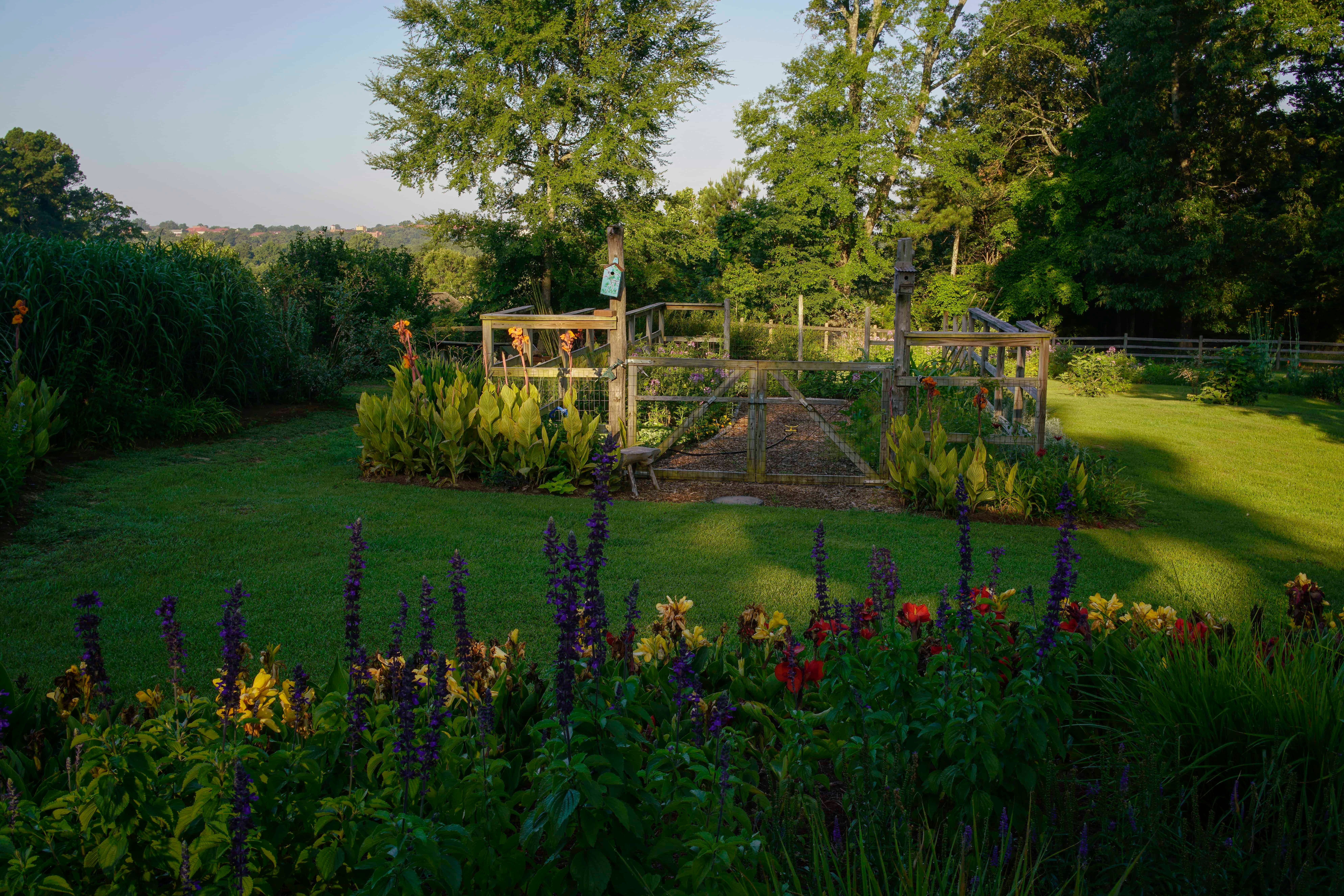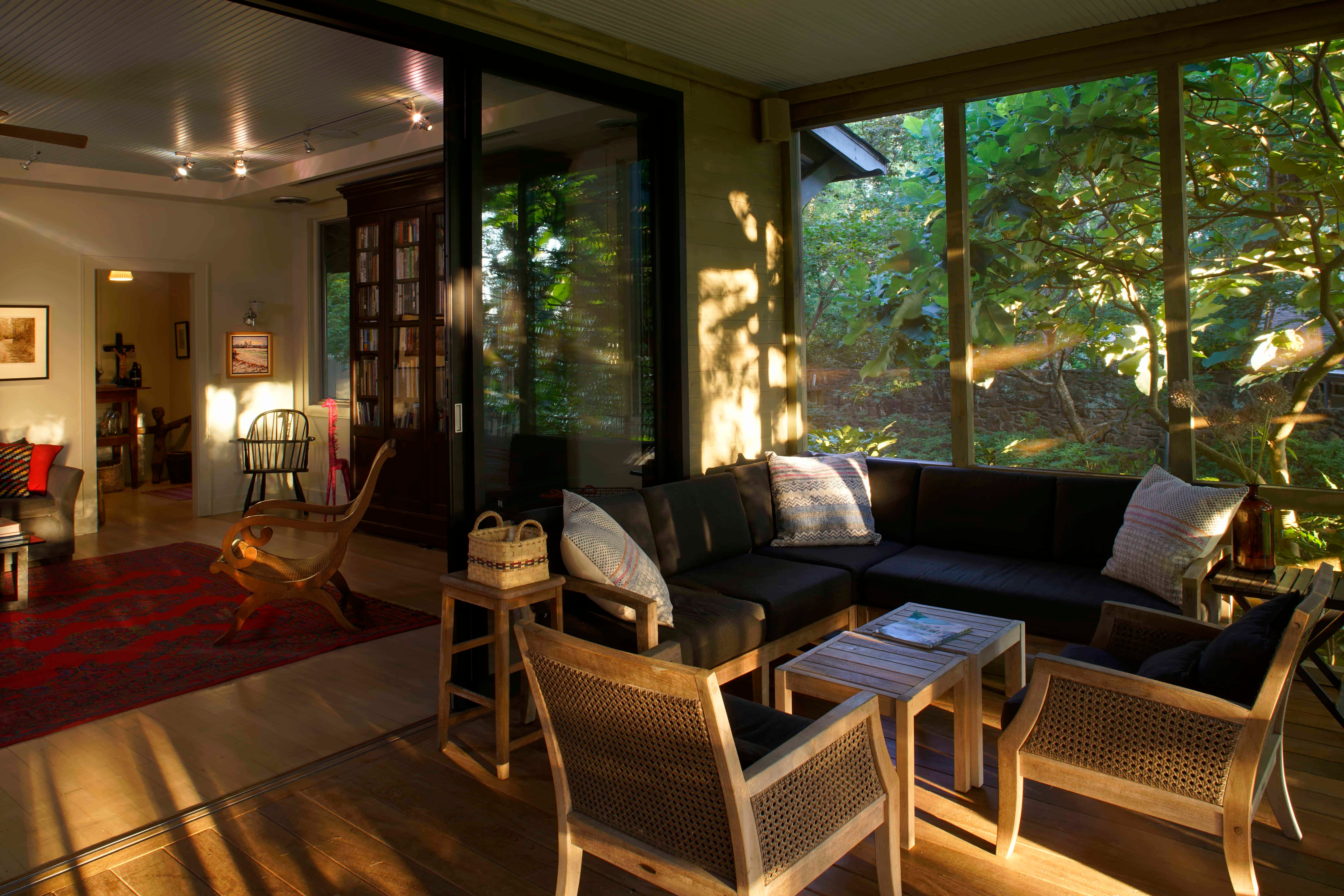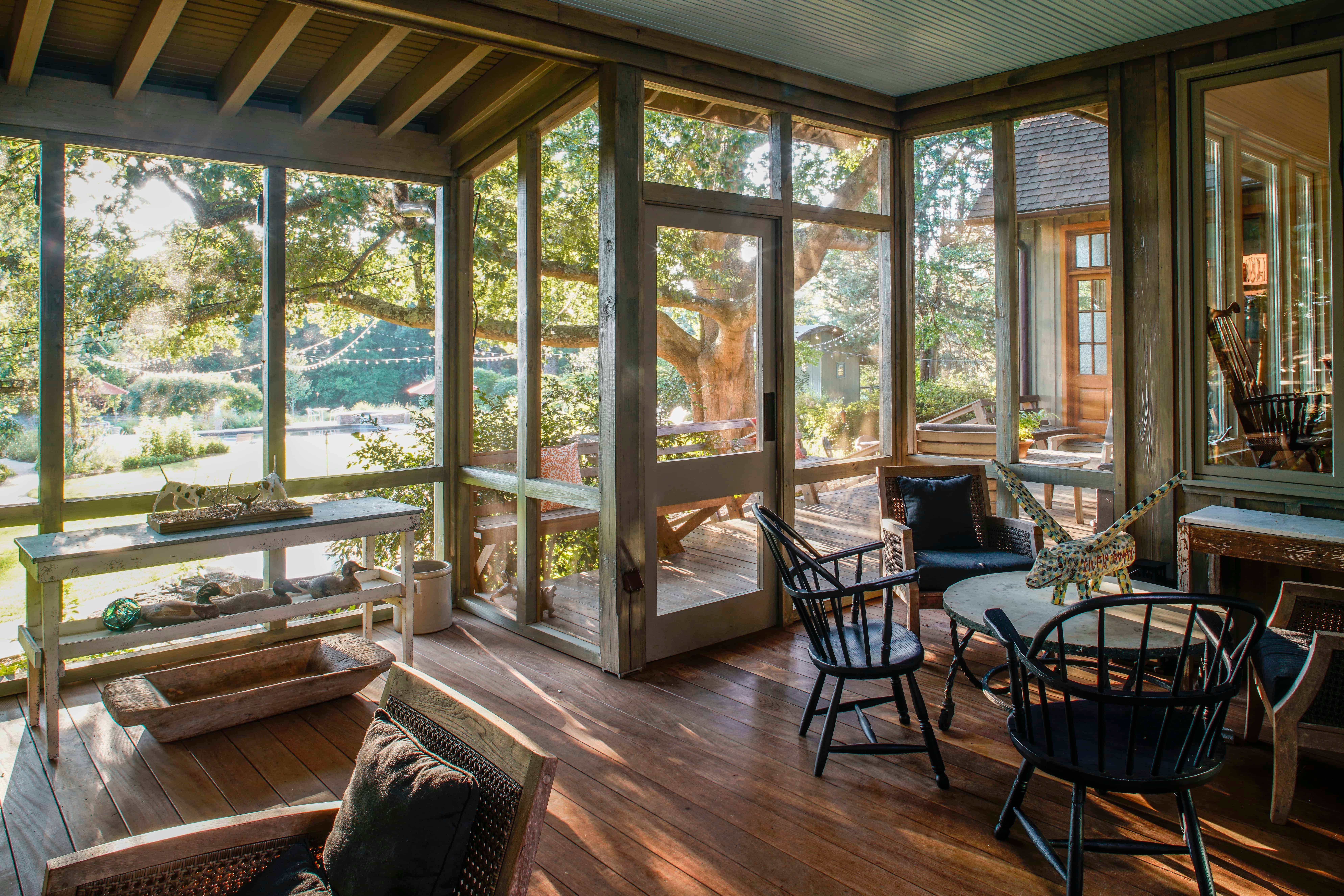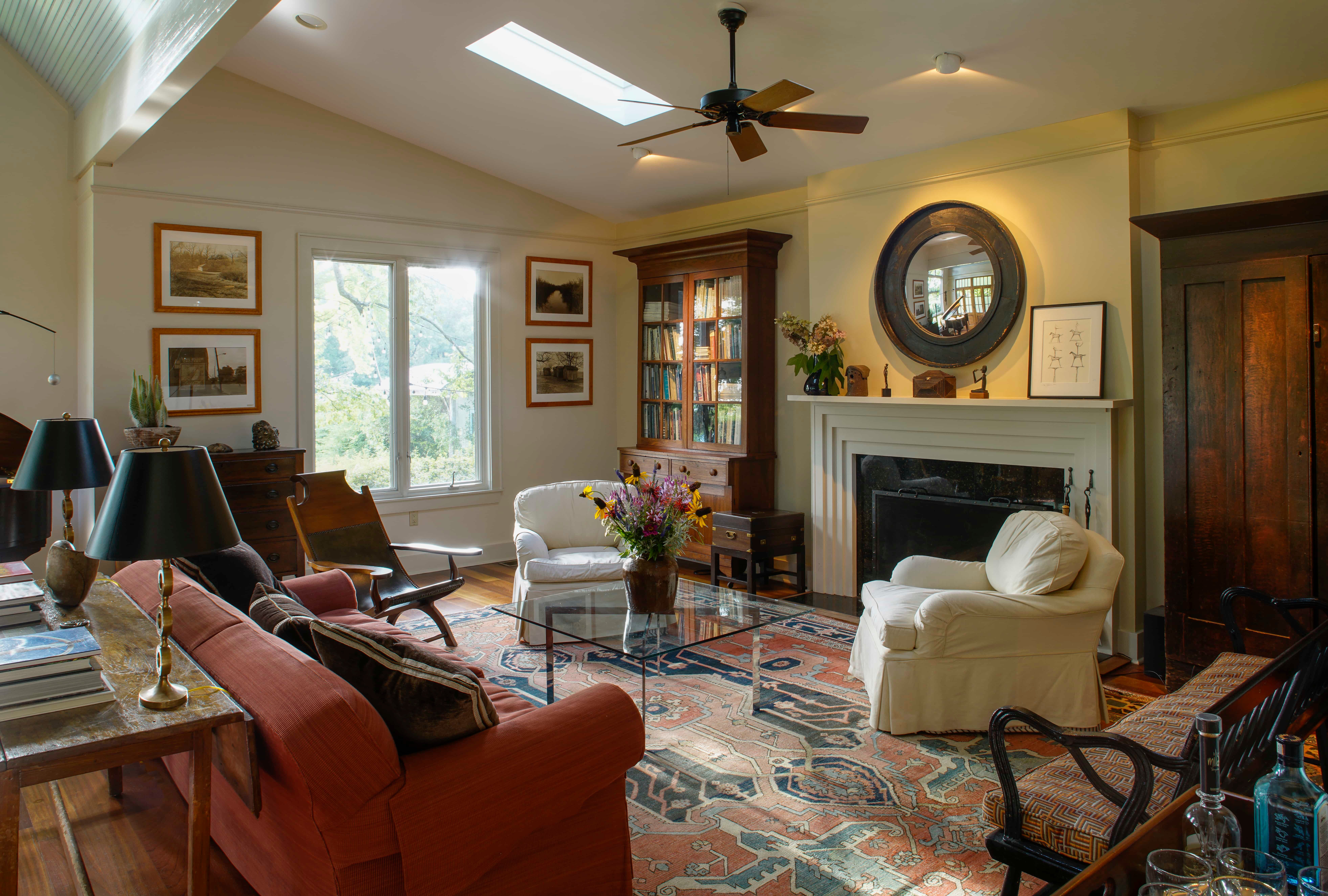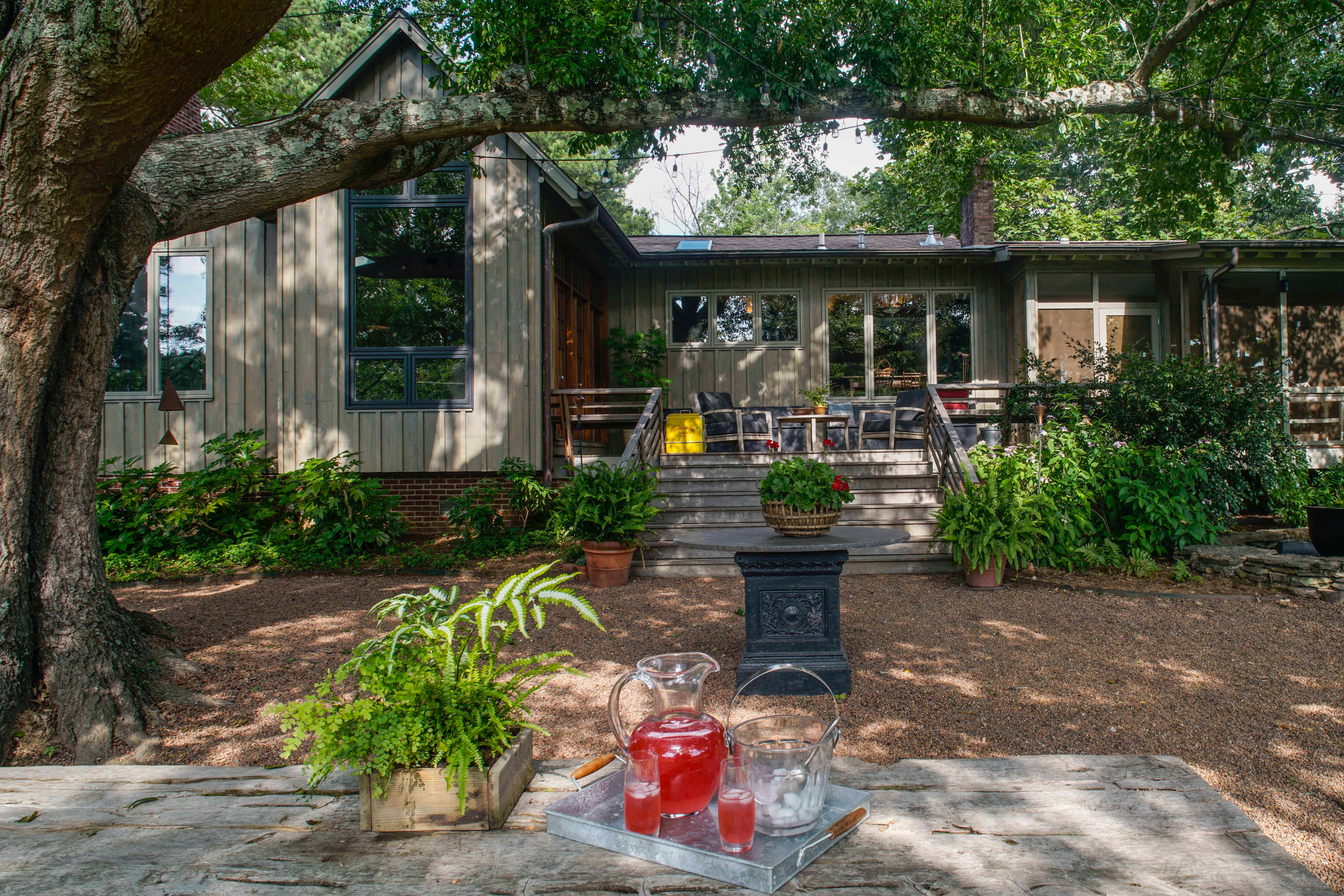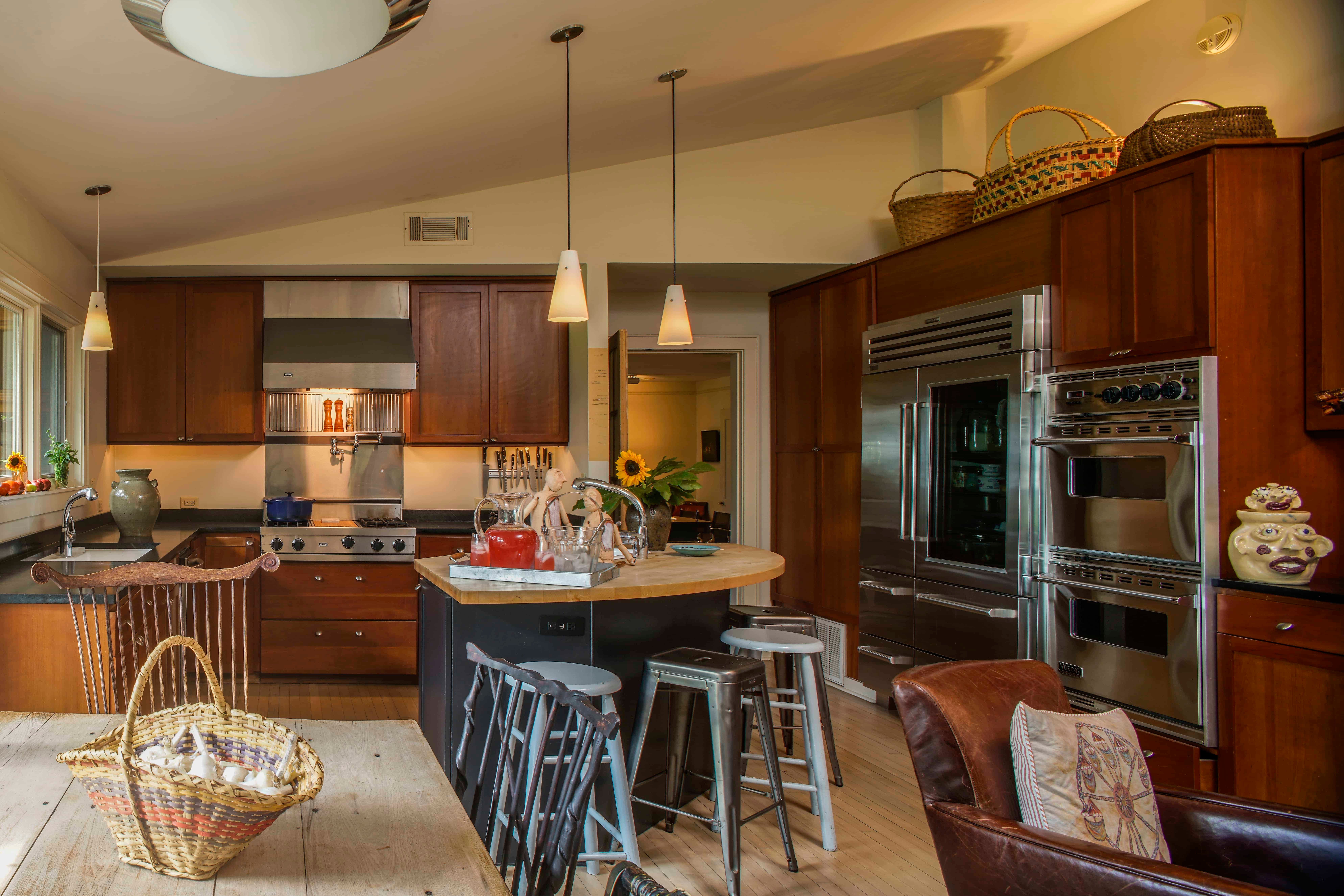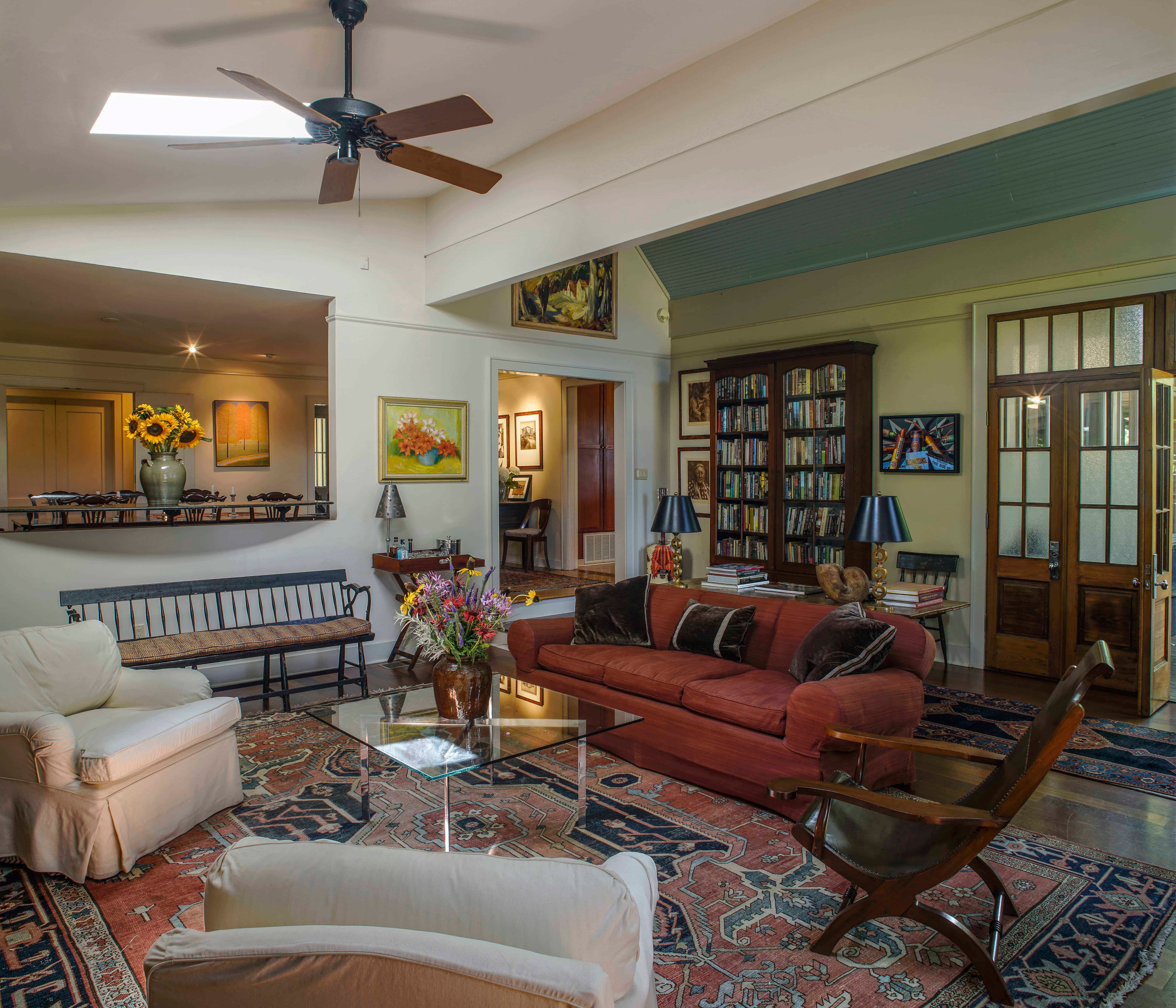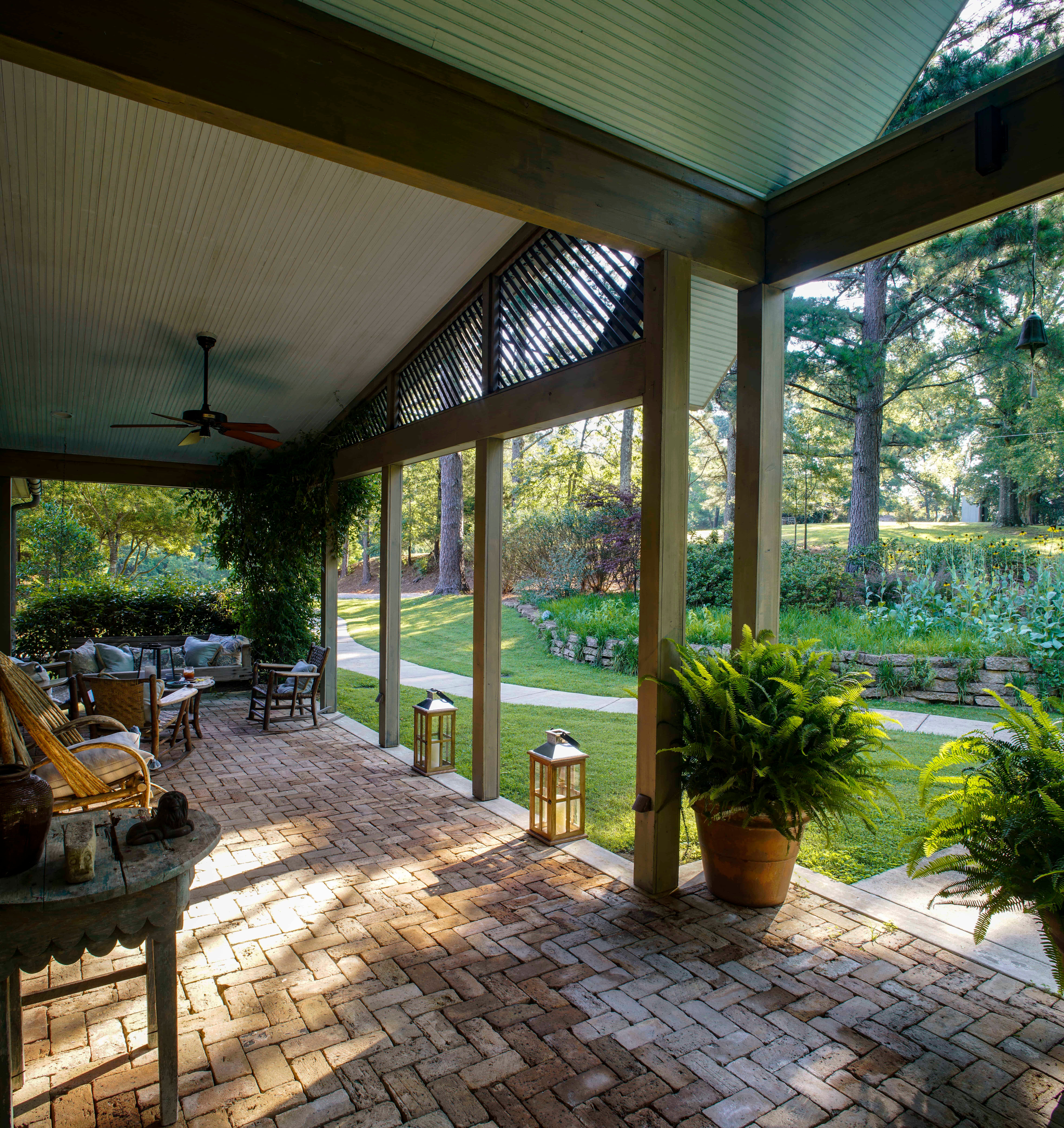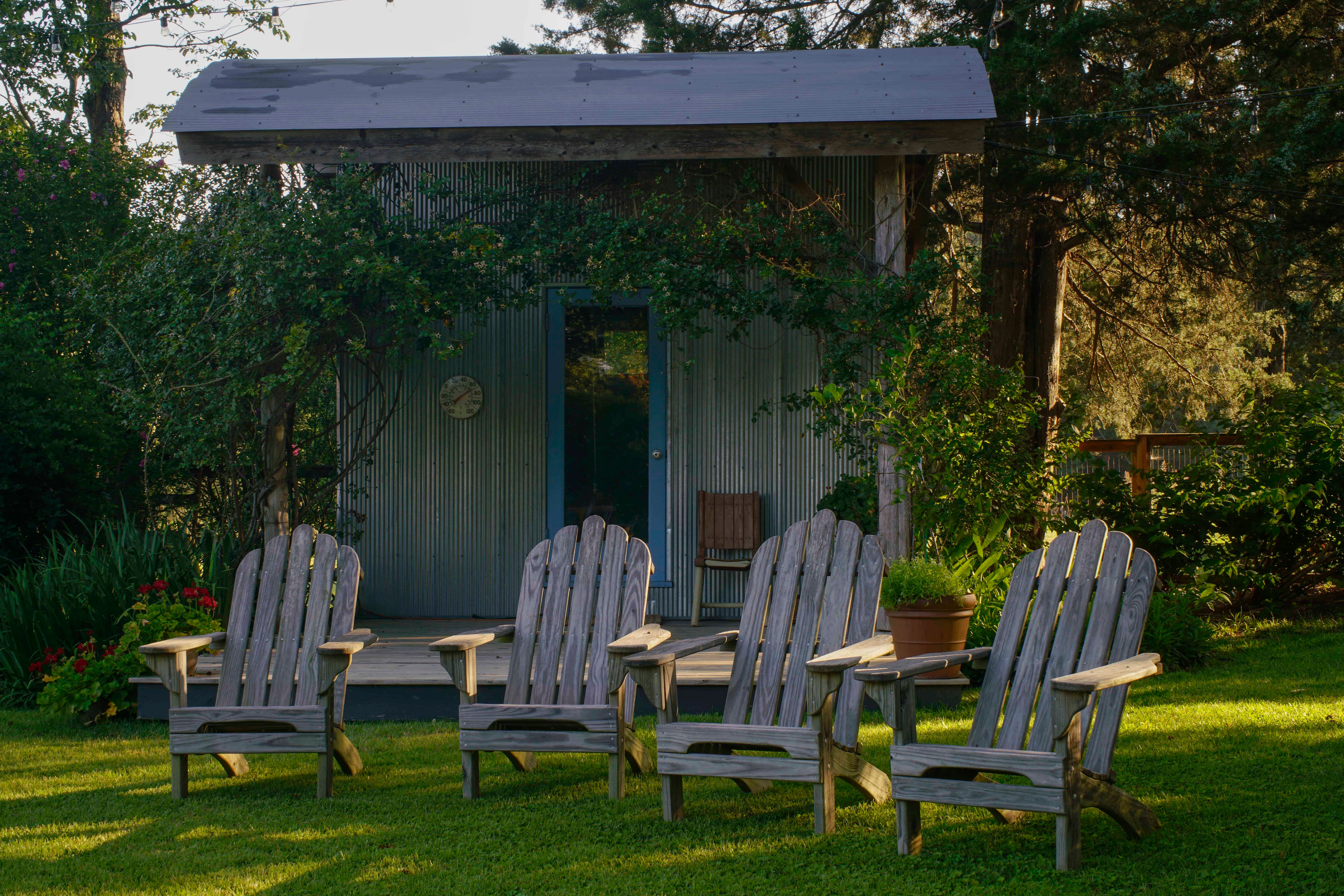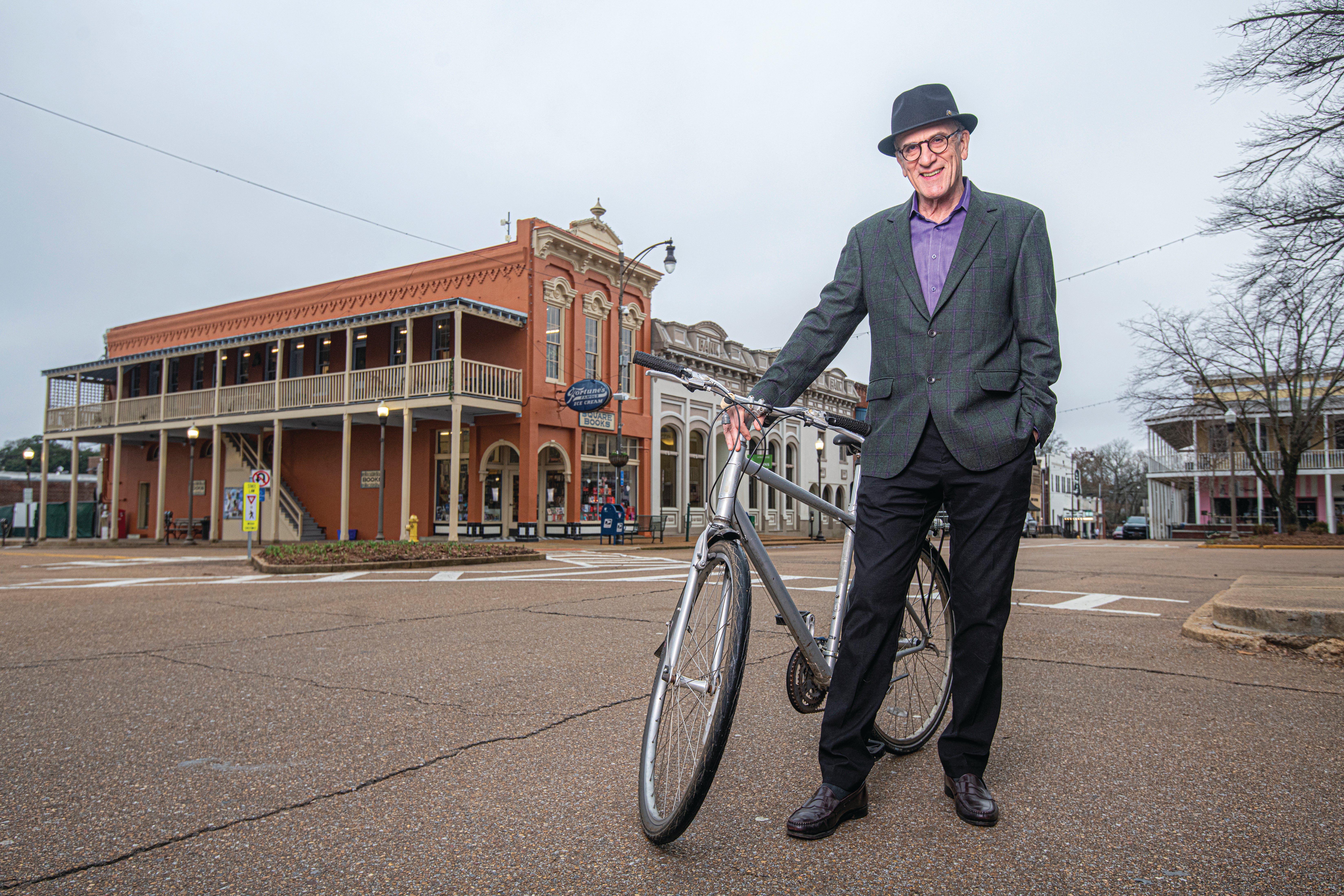There's No Place Like This Home
How one Oxford family transformed a lackluster home into one of the most spectacular in townBY DAVID MAGEE
PHOTOS BY LANGDON CLAY
This project looked overly ambitious, even for a talented architect and a dreamer with a background in the arts.
That’s all I could think about after visiting Tom and Dorothy Howorth’s home at 315 Eagle Spring Road in Oxford not long after they purchased it in the mid-1990s. All they had to show at the time was promise out the back door, the back yard framed by a big tree on top of one of the city’s highest hills.
The house was a typical “ranchburger,” recalls Tom Howorth, owner of Howorth and Associates Architects in Oxford. Built in the early 1960s with eight-foot ceilings and clad in vinyl siding and various colored brick they called a “motley blend,” the house on a three-quarter acre lot had no landscaping to speak of and small windows that made the cramped space feel tighter.
The house wasn’t even the Howorths’ first choice after moving home to Oxford in 1995. They had been looking for a year, making offers on four other properties, but settled on the Eagle Springs Road home because of the large, deep-rooted water oak that shaded the western side.
What happened after was a series of fortunate events resulting in a special, perhaps unique, property in Oxford. The Howorths’ home can accommodate dozens for entertaining, but on most days it serves family and friends as a large garden cottage, anchored by a large live-in kitchen that overlooks grounds of almost 20 acres.
What happens at the front door, good as it may be, stays at the front door since the journey into the kitchen, and out the screen porch, under the oak tree, down by the pool, and out to the garden gets more surprising and delightful with every step, culminating in a California-esque vista that reveals a sweeping view of the Ole Miss campus that one otherwise has to be in an airplane to see.
But the sounds from this location also get one’s attention, since from a mile away the Howorths can hear the cheers from the baseball and football stadiums and the sounds of the Ole Miss Pride of the South when the band plays in the Grove.
How this rare property came together, with 20 private acres secluded on a hill, is the result of both good fortune and a reaction to the pressure of a classic perfect storm.
The Howorth home was one of three houses at the top of the hill on Eagle Spring Road beyond a subdivision built in the 1960s. Sharing the street’s end were two other houses: one was a similar, but smaller ranchburger, and the other was an old two-room house that had belonged to the African-American Isom family, which at one time had owned 160 acres around it. But, its last owner, Mae Belle Isom, had died, leaving 10 acres and the house that soon fell into disrepair.
Not long after the Howorths moved into their home and began work on it, the development pressure that had convinced Tom to move his firm to Oxford resulted in a heavily wooded adjacent 11-acre property being clear-cut into a 24-home subdivision. Their immediate reaction was to go to work trying to buy land around them, more than anything else as a measure of protection.
In five separate transactions, they ended up acquiring 20 acres, much of it woods and the rest covered in kudzu. But it was 20 acres, on a hill, in the middle of Oxford.
“It was a series of fortunate events,” Tom says.
A talented and passionate gardener, Dorothy worked closely with Sam Creekmore on the landscape design, initially to protect the three-quarter acre lot from neighboring encroachment but subsequently, to extend it into a landscape that is more rural than suburban. The porches, decks, and patios that the Howorths added to the front and back of the house extend its range and the variety of habitable spaces. This connection between indoor and outdoor remedied the main deficiency they saw in the original house.
Inside, Dorothy and Tom have collected furnishings that match their lifestyle, and art, mostly by Mississippians and much of it by friends, so they are surrounded by things they are comfortable with but are also interesting to others, like the Robert Malone landscape in the dining room. Dorothy’s cousin Sam Blount, the New York-based interior designer, helped the Howorths organize those things into a coherent collection and rooms that are properly furnished and decorated.
The home, much like the property, is an improvement on the original, with additive benefits of Howorth’s architectural philosophy of bringing creativity and livability and preserving what you have rather than tearing it down and starting over.
He kept low ceilings in some rooms, for example, to provide spatial variety — “having low ceilings in some rooms reinforces the grandeur of higher ceilings in others,” Tom says. And they tore off the vinyl and brick veneer to find much of the original siding beneath: it was board-and-batten, which is now the home’s exterior.
“We moved the kitchen into what had been the living room to put it in the center of the house and make it big enough to gather and eat in,” Tom says. “Like most houses, the kitchen is where most people hang out, whether its family or friends, and putting it in the middle, looking out on the landscape made sense to us.”
Far from being a showcase, the house retains the casual unpretentiousness of a ranch. For the past twenty years it has ben a workhorse of a house where the Howorths raised three children and multiple family dogs, and Tom’s structural plan has adhered to hominess and comfort first, with big “A” architecture taking a back seat. Stylistically it is more about how the house and landscape work together.
Inside, the furnishings reflect Dorothy’s years in the antique auction business and her stint as co-owner (with Marcie Ferris) of Material Culture, where they sold mostly southern antiques and decorative arts, while the art is a collaborative collection of combined birthday, Christmas, and anniversary presents. Books can also be found everywhere, only part of which can be blamed on Tom’s brother Richard, owner of Oxford’s popular Square Books.
The Howorths also enclosed the carport for a family room, larger laundry room and a utility room, and Tom united the whole with a gable on the front and back, expressed inside as a cathedral ceiling, tying the old and new parts of the house together while “creating an axis connecting the front door to the oak tree in the back.”
Yes, the oak tree, the reason they bought the house in the first place, is still the centerpiece of it all more than 20 years and many changes later.
“We knew we were getting into a project,” Tom says, “but we knew we could make it a very special place. We had no idea how special, though. We were very lucky, and we know that.”


